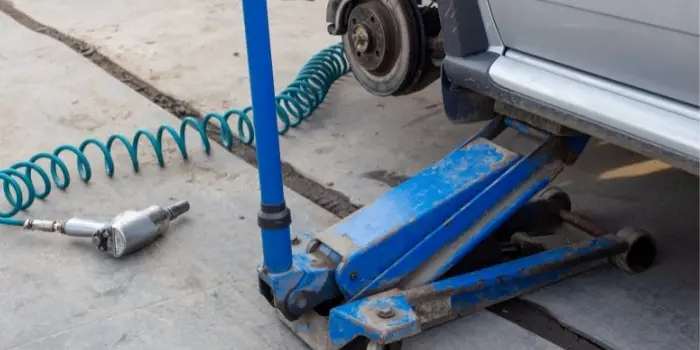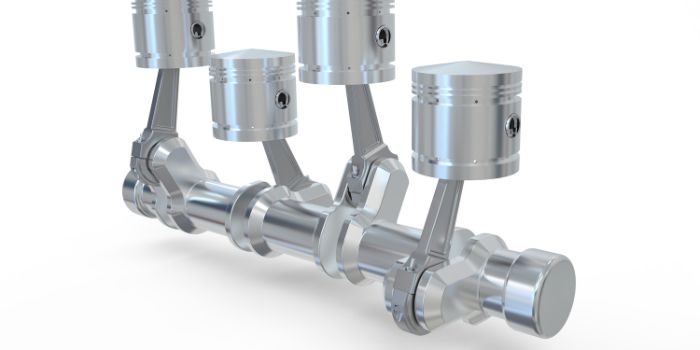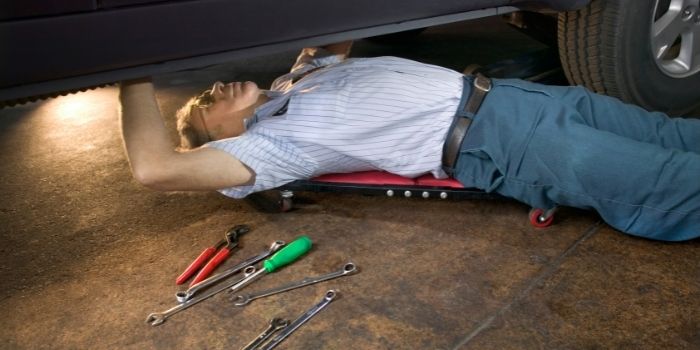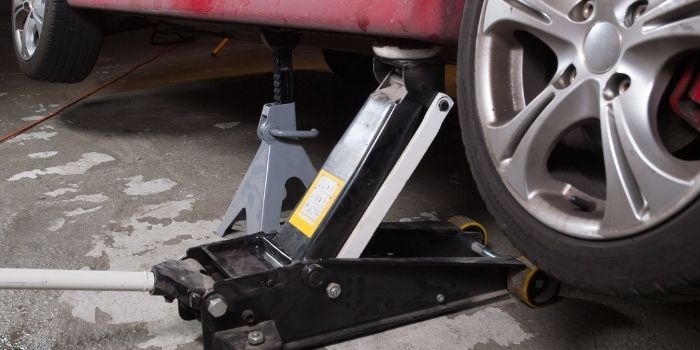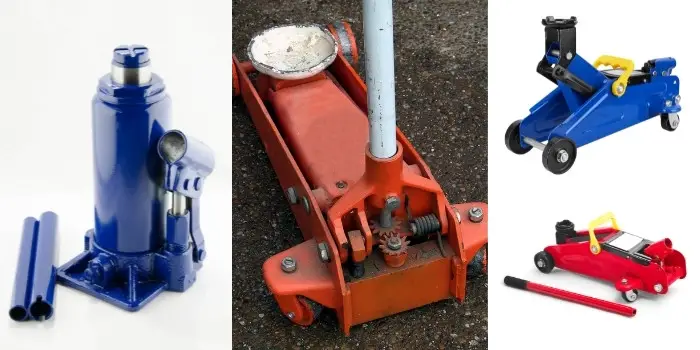
The hydraulic floor jack is a hydraulic tool with a saddle, rollers, and a hydraulic pump that can easily raise an entire car from the side and maintain it in the air while you crawl under it securely.
However, knowing how to examine, execute, and maintain your hydraulic floor jack is critical if you want to operate it without an accident.
Whether your jack isn’t lifting properly, slowly sinks under load, or feels unsteady, these problems usually point to simple maintenance or repair needs.
In this guide, we’ll cover the most common hydraulic floor jack problems, their causes, and practical fixes and maintenance tips to keep your jack working smoothly and safely for years.
Hydraulic Floor Jack Problems and Their Fixes
Common problems with hydraulic floor jacks often stem from low hydraulic fluid levels, air trapped in the system, or a faulty release valve.
Fortunately, most of these issues can be fixed through basic maintenance and proper troubleshooting.
Here’s a detailed guide to diagnosing and resolving common hydraulic floor jack problems…
1. Jack Doesn’t Lift the Weight
When your jack fails to raise the vehicle or doesn’t hold pressure, it indicates an internal issue.
Fixes:
- Check the load capacity: Ensure you’re not exceeding the jack’s rated weight limit.
- Inspect hydraulic oil level: Low or excessive oil can prevent proper lifting. Refill or drain as needed using only high-quality hydraulic oil.
- Bleed trapped air: Remove the filler screw, open the release valve, and pump the handle repeatedly to expel air bubbles.
- Tighten the release valve: Make sure the valve is fully closed before pumping.
- Lubricate moving parts: Regularly oil all pivot points and joints to prevent friction and rust.
2. Floor Jack Leaking Oil
Oil leaks indicate worn-out seals or damaged O-rings in the jack’s hydraulic system.
Fixes:
- Locate the leak: Inspect the oil chamber area.
- Drain the fluid: Stand the jack upright and empty old oil into a container.
- Replace the O-ring: Remove the valve screw and install a new O-ring where the leak occurs.
- Refill with premium oil: Refill as per manufacturer specifications.
- Tighten the valve screw: Close it securely to prevent future leaks.
3. Overload Valve Accidentally Turned
The overload valve prevents the jack from lifting beyond its rated capacity. If turned improperly, it can disable lifting.
Fixes:
Do not adjust the overload valve yourself. Contact a professional technician or hydraulic jack specialist to reset or recalibrate it safely. Incorrect adjustment can damage the jack or make it unsafe.
4. Wheels Don’t Roll Properly
When the jack wheels become stiff or rusty, moving it across the floor becomes difficult.
Fixes:
- Clean and lubricate: Wipe off dust and debris, then apply quality lubricating oil to the wheels.
- Avoid moisture exposure: Always store your jack in a dry place.
- Use proper oil: Avoid cheap lubricants that can corrode metal parts over time.
5. Jack Frame Cracked or Deformed
A damaged or bent frame compromises the jack’s structural integrity and makes it unsafe to use.
Solution:
Stop using the jack immediately. If the frame is bent, cracked, or deformed, replace the entire unit — do not attempt to repair it. Minor scratches are fine, but any visible bending indicates internal weakness.
6. Jack Leaking Milky or Foamy Fluid
Milky or foamy hydraulic oil suggests water or air contamination inside the system.
Solution:
- Locate the drain plug (usually under the housing or tool tray).
- Clean the area around the plug to prevent dirt from entering.
- Drain old oil completely.
- Refill with fresh hydraulic oil using a funnel — avoid contaminants.
- Bleed the system by pumping the handle to remove trapped air.
- Seal the drain plug and wipe off excess oil.
7. Jack Feels Spongy or Slowly Sinks
If your jack lifts but doesn’t hold its position, air or internal seal issues are often to blame.
Solution:
- Bleed the system thoroughly to remove trapped air bubbles.
- Check for seal leaks around the piston and ram — replace faulty seals.
- Inspect oil level and top up with fresh hydraulic oil if low.
Why Proper Hydraulic Jack Maintenance Matters?
Maintaining your hydraulic floor jack isn’t just about keeping it working smoothly—it’s about safety, reliability, and long-term savings.
A floor jack supports heavy loads, and even a small malfunction, such as a leak or loss of pressure, can lead to dangerous accidents.
Regular maintenance ensures that the jack performs as intended every time you use it, minimizing the risk of sudden failure while lifting a vehicle.
Over time, hydraulic oil can degrade, seals may wear out, and internal parts can collect dirt or rust.
Ignoring these small issues can cause major breakdowns that compromise the jack’s ability to hold pressure or lift evenly.
This not only endangers the person working under the vehicle but can also damage the car if the jack slips or collapses.
A simple routine—checking oil levels, cleaning after use, and lubricating moving parts—goes a long way in preventing such hazards.
From a financial perspective, preventive maintenance is far cheaper than replacement or major repairs.
A neglected jack can develop internal corrosion or seal damage that often requires a full rebuild or complete replacement.
In contrast, spending just a few minutes maintaining it after each use can extend its lifespan for years.
Hydraulic Floor Jack Maintenance Tips to Keep in Mind
A well-maintained hydraulic jack not only performs better but also lasts much longer.
Regular care helps prevent sudden failures and keeps your lifting equipment safe for use. Here are some essential maintenance tips worth following:
1. Keep the Jack Clean
After each use, wipe down the entire surface with a clean cloth to remove oil, dirt, or debris.
Pay special attention to the ram, handle socket, and joints, as dirt buildup can affect performance and cause premature wear.
2. Inspect for Loose or Worn Parts
Regularly check for loose nuts, bolts, and fittings. Tighten any that have come loose due to vibration or heavy use.
Replace any visibly worn or cracked components before they lead to bigger problems.
3. Protect the Jack’s Seals
The seals inside the hydraulic system are crucial for maintaining pressure. Avoid using contaminated or incorrect oil, as it can damage the seals.
Also, never store the jack with the ram extended, since it puts pressure on the seals and can cause leaks over time.
If you need to replace seals, o-rings, and gaskets, use your rebuild kit:
- Carefully remove old seals and O-rings with a plastic pick (avoid damaging metal grooves).
- Install new seals and rings in the exact same order and direction.
- Lightly coat them with fresh hydraulic oil before inserting to ensure proper sealing and smooth movement.
4. Check and Maintain the Handle Mechanism
The handle controls the lifting and lowering operation. Ensure the release valve linkage and handle socket move freely without sticking.
Apply a light machine oil periodically to maintain smooth action.
Every few weeks, test the jack under no-load conditions — pump it to full height and release it slowly.
This keeps the internal components active, circulates oil properly, and alerts you early to any developing issues like slow lifting or uneven motion.
5. Avoid Extreme Temperatures
Hydraulic oil thickens in extreme cold and thins in excessive heat, affecting jack performance.
Try to use and store your jack in moderate temperatures. If you must use it in the cold, let it warm up slightly before applying heavy loads.
6. Label and Date Fluid Changes
Just like engine oil, hydraulic oil degrades over time.
Mark the date when you last changed or topped up the oil and replace it periodically — ideally once a year if the jack is used frequently.
7. Follow Manufacturer Recommendations and Store Your Jack Properly
Different jacks may require specific oil types, service intervals, or maintenance methods. Always check your user manual before refilling, adjusting, or replacing any part.
Also, always keep the jack in a dry, dust-free location when not in use.
Moisture can corrode internal components and cause rust on the frame and wheels. Avoid leaving it outdoors or in damp garages for extended periods.
Pro Tip: If you’re uncertain about disassembly steps or if the jack uses a complex dual-piston design, refer to the manufacturer’s exploded diagram or seek professional assistance. Incorrect reassembly can cause pressure loss or unsafe operation.
When to Choose Rebuilding Over Replacing Your Hydraulic Floor Jack?
Deciding whether to rebuild or replace a hydraulic floor jack depends on a mix of cost considerations, the jack’s condition, and long-term reliability.
A rebuild is often the most cost-effective option when the jack is structurally sound but experiencing issues such as worn seals, minor leaks, or spongy lifting caused by air or contaminated hydraulic oil.
Rebuilding allows you to replace only the faulty internal components—like O-rings, seals, and gaskets—without discarding the entire unit.
This typically costs a fraction of what a new jack would, especially for high-quality, heavy-duty models.
However, the condition of the jack frame and major components is critical.
If the jack’s frame is bent, cracked, or severely rusted, a rebuild may not restore it to a safe operating standard.
No amount of seal replacement or oil flushing can compensate for structural damage. In such cases, replacement is the safer and more reliable choice.
Another factor is age and usage history. Older jacks that have been heavily used for years may have multiple components approaching the end of their lifespan.
Even if a rebuild temporarily fixes the problem, new issues may appear soon after. Conversely, a relatively newer jack with isolated hydraulic issues is an ideal candidate for a rebuild.
Finally, consider safety and manufacturer recommendations. Some jacks are designed for easy servicing and rebuilding, while others may not be user-serviceable.
Always check whether a rebuild kit is available and whether following the manufacturer’s instructions will restore the jack to its rated capacity.
Final Thoughts
A hydraulic floor jack is one of the most valuable tools for any garage or workshop, but it demands proper care to perform safely and reliably.
Understanding common issues, maintaining fluid levels, and following routine inspection habits can prevent most failures before they happen.
When performance drops, a careful repair or rebuild often restores the jack to like-new condition—saving both money and downtime.
Always use the right hydraulic oil, genuine replacement parts, and avoid overloading beyond the rated capacity.
Above all, treat your jack as precision equipment: keep it clean, store it properly, and service it regularly.
With consistent maintenance and a bit of attention, your hydraulic floor jack will deliver years of dependable service whenever you need to lift with confidence.

Based in Orem (Utah) John Paterson graduated from Utah Valley University and has begun writing in 2009. He has a large wealth of experience in writing articles related to cars, automotive repair, wheels, cleaning/maintenance, and much more. He has also written instructional articles in a similar niche for a few online publications as well. Currently, he works as a mechanic in his personal garage shop where he loves serving his countrymen from his heart.

